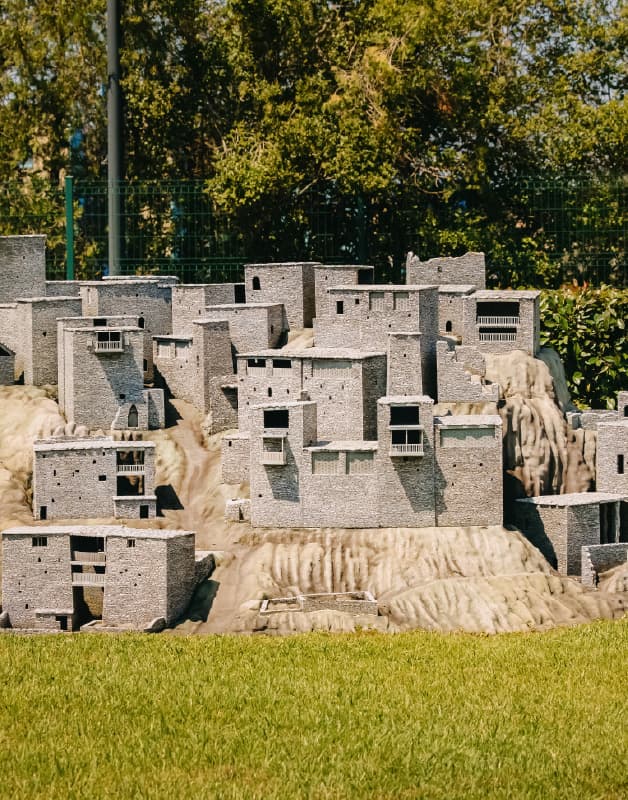შატილი

შატილი ქართული სამშენებლო ხელოვნების ერთ-ერთი უნიკალური ძეგლია. ზღვის დონიდან 1400 მეტრზე, კლდეზე შეფენილი სოფელი ერთდროულად საცხოვრებელიც იყო და ციხესიმაგრეც. იგი საუკუნეთა განმავლობაში დარაჯობდა საქართველოს ჩრდილოეთ გადმოსასვლელებს.
Shatili is an ancient settlement, and the formation period of its fortress-village architecture and defensive structures is even older. However, the existing houses today can be dated to the 17th century or the early 18th century. For centuries, Shatili protected the region from invasions by North Caucasian tribes.
Did you know that...
1. A row of fortress-houses built side by side lines the edges of the village, forming a continuous, impenetrable defensive wall that securely seals the settlement. Shatili is connected to the outside world by a single narrow road leading through the Argun Gorge.
2. Shatili’s settlement is terraced, with the main types of buildings being flat-roofed houses and tower-like dwellings. Narrow stone staircases run vertically between the buildings throughout the village’s height. Scattered passageways remain, allowing locals, if under enemy attack, to move swiftly across the entire village without stepping outside into the streets.
3. At the entrance of the village, near the western edge, stands a rectangular, partially open building with a roof made of flagstones - the Saphikhvno - which served as the men's assembly hall for discussing important community matters.
4. In 1970, restoration works began here, carried out by a specialized scientific-restoration enterprise. In 1972, archaeological excavations were conducted on 12 towers.
